Eruption of the Possible/Erupción de lo Posible
A conversation with Buenos Aires-based choreographer, stage director, and cultural agitator Silvio Lang: on seismographies of the present, counter-hegemonic and sex-disobedient practices, and the resensualization of the social fields

Para la versión en español ir a la página 2. >>
Buenos Aires April 28, 2022
SILVIO LANGBreakfast…a marica (faggot) breakfast, actually.
PEDRA PEPABienvenides todes a marica breakfast, here is Pedra Pepa with Silvio Lang. I wanted to manifest this conversation with you, because my desire and my goal is to continue creating bridges between Buenos Aires and Minnesota. I have already been working with Celia Argüello to continue widening that channel, so that it flows more and for Minnesota to see other ways of affection, of art, of the working in performance. And there are conversations that are happening here in very different ways than they are happening there. Welcome to the program (laughs.)
SLThank you very much for the invitation, Doña Pepa. Where do we start?
PPWhere do we start? Silvio, who are you? Well, I’ll start—I met you at a party two years ago. We were dancing in a basement—I don’t remember what it’s called.
SLIn Puticlub?
PPIt was too dark to be Puticlub. It was a half-paki (“normies” or cis-heteronormative people) party, but there was electronic music and there was Nem and we were dancing…and Celia pointed me towards you.
SLAh yes, we met in a place that no longer exists: Cocoliche, a mythical place of Argentine experimental electronic music, which closed with the quarantine.
PPBeautiful Cocoliche! I left there very excited (laughs.)
Ghost Towns & Origin Points
PPSo, Silvio, tell me…
SLI am an artist from Santa Rosa, La Pampa, southwest of Buenos Aires. It is an agricultural or livestock province basically, which has a wet part of productivity and another dry part that is a large unproductive desert. To the west is the “desert route,” which crosses much of the territory, and there are many ghost towns, similar to those in Hollywood movies. I imagine they exist in the southwest of the USA.
PPSpaces without water…
SLI lived until my adolescence in Santa Rosa, the capital of the province, which is part humid, and I always felt the desert of the west as something that grew and ran after me and pushed me to the big city, Buenos Aires. In the winter and summer holidays from school, I traveled to Buenos Aires to take staging and performance seminars and to fuck. Because I’ve always been a fag—then a baby fag.
PPAnd did you come alone from there?
SLYes. The first trip was with a film and video group, at the age of 12. Before dedicating myself to the theater, my passion was cinema—I wanted to be a film director. When I was 15, Rubén Szuchmacher, a very prestigious theater director at that time, traveled to Santa Rosa to give a seminar on direction and staging, and in that framework, I staged a play by Tennessee Williams, Something Unspoken. It is a work about two lesbian characters, hidden in the south of the United States.
PPIs that how you turned to gesture?
SLFrom there I did not stop making work. I directed text theater: classics such as Euripides’ The Trojan Women; Bérénice by Jean Racine, contemporary Argentine and foreign theater. I ventured into a strand of women and lesbian writers: Marguerite Duras, María Moreno, Griselda Gambaro, Graciela Safranchik, Susana Thénon, Olga Orozco, Idea Vilariño, and another strand of maricas and degenerate writers: Juan José Sena, Alejandro Urdapilleta, Osvaldo Lamborghini. Until I was 33 years old, I was under the orbit of the theatrical machine of heterosexual representation, although with those small feminist and marica resistances in the literary repertoire.
There was a play of my own dramaturgy, Tango Nómade, that I did in my 20s, which retroactively could be understood as the opening of a queer line. And a play that, for me, was the closing of that cycle of theater of heterosexual representation was Dear Ibsen, I am Nora by Gambaro—with a Nora who rebelled not only against her husband and children, but against her author. We built it with the choreographer and dancer, Alina Folini—a very disruptive gestural choreographic system in relation to the text and its narrative structure.
Then a cycle closed for me and another one opened that I began with Meyerhold’s montage. Meyerhold, freakshow del infortunio del teatro (Meyerhold, freakshow of the misfortune of the theater.) A move away from the theatrical text and the Aristotelian story linked to it, and from the figure of the director in the 21st century. And from there came a series of simultaneous projects, which involved thinking of stage practice as a sensitive war. A counter-hegemonic dispute begins, inside and outside the institutions. At that time, I read institutions as places that could be questioned or altered… (They eat, laugh, talk about fruits and breakfast.)
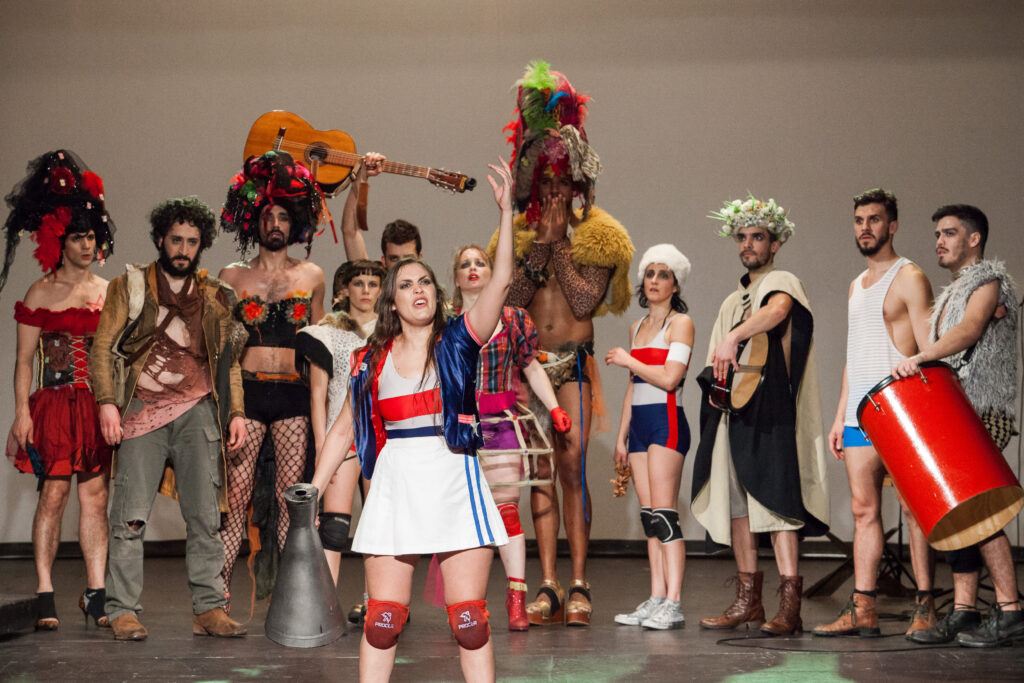
How to Stop the Institution from Instrumentalizing You
PPYou talk about how you wanted to get out of the representation of stories—even if they were queer, they were always with the tone or the heteronormative lens of society. You research how we inhabit those bodies and representations. You talk about counter-hegemony, about different practices manifest as impulses or eruptions in Erupciones, a workshop and performance. It strikes me that you call it that, because in Hawaii the lava creates new territories when it reaches the water—new territories are created, literally.
SLIt was about creating sensitive “war machines,” a term of Deleuze and Guattari. These machines had to do with misaligning or decoupling the patriarchal logic of the heterosexual way of life. They are sensitive because we are working on a reconfiguration of perception and a resensualization of the social fields.
PPWould the machines be practices, like research techniques with movement and energy?
SLOf course. The war machines in A Thousand Plateaus, operate by detotalizing the idea of the state as a concentrating power of life, and undo the processes of normalization. So Dear Ibsen, I am Nora and Meyerhold… had the purpose of disrupting and decoupling the machinery of the theater, of representation. Then, the chamber opera based on Lamborghini’s El fiord, which I did for the Experimental Center of the Teatro Colón, the purpose was similar: to break oneself from the disciplinary processes of the artistic field of opera, and to denounce the denialist and anti-poor politics of the government of that time. That involved inventing stage procedures that undo the standards for stage performance and the ways of relating to stylistic and musical structures in the field of operatic production.
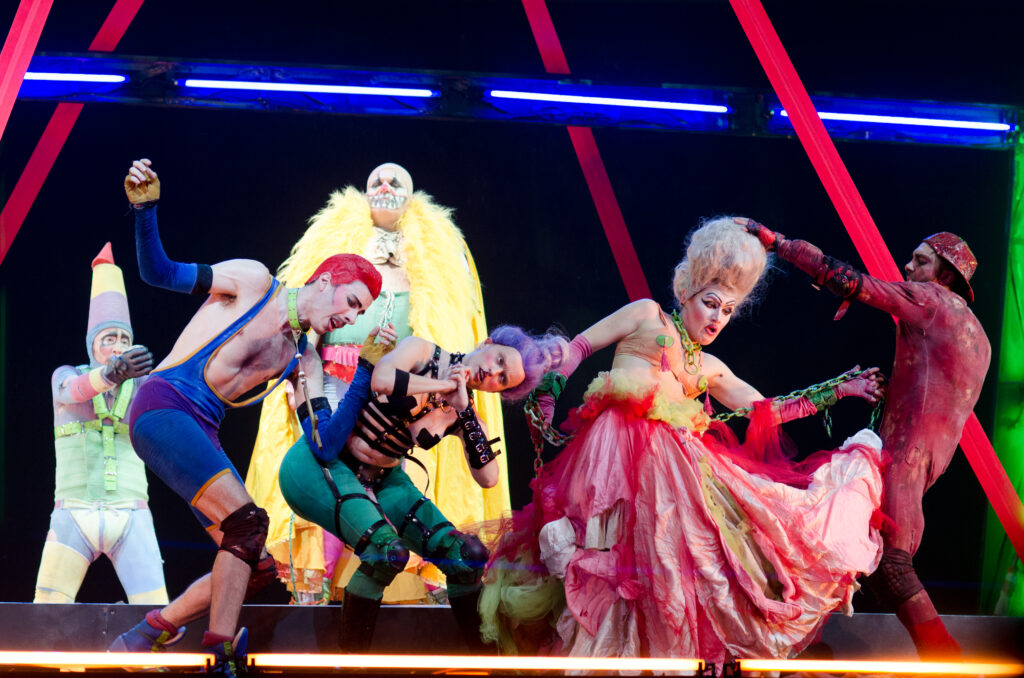
The public cultural institutions summoned me, and my job was basically to erode them (laughs.) To reoccupy these spaces and put in crisis the tyrannical rules of institutional functioning, the artistic contents of the program, the modes of articulation of the productions—in addition to political slogans that I supported in an aesthetic pamphlet. For me, it was not so much a question of doing my little performance work, but about putting in crisis the categories and rules of a cultural institution that restricts artistic and political invention. To consider institutions as fields of forces where different angles and transformations can occur—whether I was summoned from the Teatro Colón, the Teatro Nacional Cervantes, or the Kirchner Cultural Center.
PPAnd you were paid for that. They brought you and said, “Transform us, put us in crisis.” (They laugh.) Because it happens a lot in Minnesota that queer people and maricas are called to assemble, or produce a thing for them to put a photo on their website, and then—bye.

SLIt is a politics of appearance. They assume that by the fact that they summon you, and that in their programming they have sex-disobedient people, they are already transforming. Then they do political marketing with it. Because as Lohana Berkins, our most endearing Argentine transvestite leader, said, “The life of a transvestite who goes to university changes, but the most radical thing is how the life of the university changes with a transvestite inside.” However, I learned over time that the institutions that invite you to transform them do not necessarily transform. The work of what in Anglo-Saxon culture is called “diversity work” consists, as Sara Ahmed says, of “coming up against walls.”
PPThat is why my desire is to get out of the American context, because they are the global promoters of extractivism. It permeates, flows; they are like oil spills that leave us all waterlogged with this tendency. It happens with generations of choreographers who continue to replicate old ways. It is as if the desire to put the old ways in crisis is not embodied. We all buy into that by participating in institutions, with the promises of work, housing, etc.
SLI think that artists, we know how to exercise the right of otherness. To be in the artistic programming of an institution is not to co-align with that institution. For me it has been a counterpoint, a high-mindedness: to what extent can I use the resources of an institution to produce a proliferation of alternative identifications and criticisms of the categories of that institution, and to what extent does that institution instrumentalize me? If I find that I am instrumentalized, I withdraw or protest.
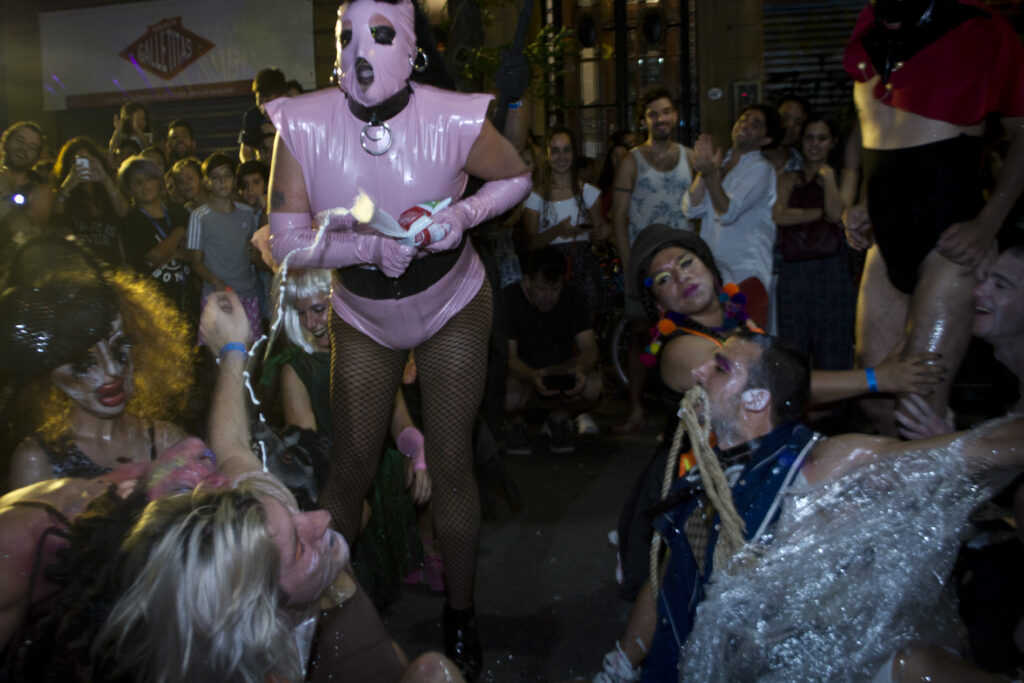
Intervention in the Heterosexual Regime
PPIs that what happened with FIBA (Buenos Aires International Festival)?
SLOf course! The intervention of Comparsa Drag, in FIBA, had that same strategy, too. I showed the organizers of the festival the videos of our street performances against the government of the city, like—are they willing to support this?
PPThe pinkwashing!
SLExactly! We produced a rather bizarre protest against the neo-fascist government of the city. It was a demonstration inside the festival with posters, a songbook, and everything. It also spilled over onto social networks and generated a power dispute within the government, between the chief of staff of the national government, Marcos Peña Braun, and the mayor of the city, Horacio Rodríguez Larreta.
My artistic practice is intervention and re-occupation of public space—practices of counter-hegemonic criticism that, at the same time, make room for the proliferation of alternative identities. It is not only to imagine territories outside of hegemonic space, but to generate vents, or more habitable spaces, in the situation we are in.
For me, the interpellation and the political enemy is heterosexuality. It is capitalism, but just as much the heterosexual regime. Capitalism is founded on the binary structure of the sex/gender heterosexist system of the monogamous familialist couple. Precisely at the moment when the capitalist state, based on the world market and the nation-state, intensifies, two huge micropolitical interests of governance arise: the sexuality of the population and the question of race. With the heterosexualizing line comes whiteness, pronatalism, racism, xenophobia, sexism, romantic love, adultcentrism, colonialism, misogyny, family, and institutional violence, etc. Capitalism is founded on the heterosexual way of life, as a political regime, which not only coerces who you fuck, which bodies you will approach and which you won’t, but aligns you with a lot of other social practices, categories of thought, norms, and ways of feeling that form your life in one sense and not in another.
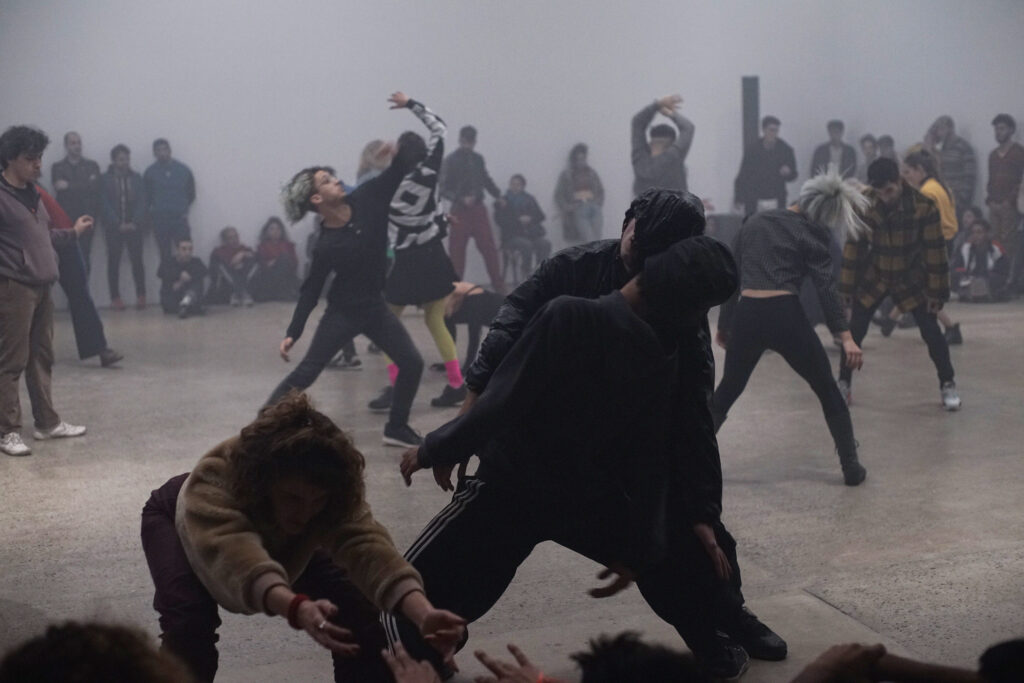
To become heterosexual is not only to choose with whom you are going to have sex, but it is also to choose a coercive way of life that is naturalized. As Sara Ahmed says, “When something becomes mandatory, it’s because it’s not necessary.” Heterosexuality in its naturalization is the restriction of existential pluralism, a straightening of bodies, an attenuation of the possible and of passion. That is the process of normalization of which Michel Foucault spoke: “The production of normality is not so much a history of discourse and institutions, it is a history of bodies.” It is reproduced with the repetition of gestures, statements, norms, categories, and ways of feeling. It is performed throughout time. The continuous repetition, without deviating or protesting, becomes comfortable, invisibilizing and naturalizing. Normalization is the history of straightened bodies. The value of queer and trans feminist theories is that they are not only anti-norm theories, but that they critique the normalization of all bodies as they are wounded by heterosexual oppression.
PPBecause it affects everyone, and marks the whole story and the entire current reality.
SLArtistic practices remake bodies, perceptions, identities, concepts, emotions, and norms via the same process through which they were naturalized: performatively. They are situated practices, in that they listen to the political forces that are pressuring bodies in the present. The situated artistic practices also question the damage that norms do to bodies, and how it is possible to inhabit them in another way, to distort them or disobey them. They break with the consensus of what we are told is the present, making room for new identities and ways of life to exist. Situated artistic practices make a public alternative sphere. To make an alternative public sphere is, then, to dispute and to expand who can exist and appear in the common space.


PPThis right now you are working on in La intimidad de lo comun (The intimacy of the common.) I saw it in February, and you’re sharing it again. It comes out of this idea of creating new ways, of disidentifying with the prescriptions of how to be in relationship and letting the libido enter the body. I also wanted to talk about this idea that heterosexuality and queerness is not necessarily who you sleep with, but the way you relate to people, how you relate to work, to institutions—that is, it is not so much an organ or a gender. For example, in the U.S., folks talk about queerness as a way of relating outside the heterosexual framework, regardless of who you fuck.
SLI don’t think there is an outside of heterosexuality. We are all ontologized or formatted by it. Heterosexuality is universal and global, like God and money. There is no uncontaminated outside. There are resistances, which carry the potential for difference. When we put ourselves in relation to the difference within ourselves and with the others, we can reconfigure what the norms and ideals of the heterosexual culture have restricted and injured in our bodies.
PPLike the desire to be a millionaire one day…
SLAccording to Ahmed, happiness is associated with certain objects and forms of life, which are surrounded by those objects. And when you surround yourself with them, it can turn out that you are unhappier than before. It is a false promise. The hope of queerness, however, is the possibility or affective work of disidentifying from these norms and feelings, if guided by the theory of disidentification from José E. Muñoz.

Sweaty Concepts & Provisional Communities
PPAnd you can create this collectively as well, right? Like in Devenir Perra (Becoming Whore.) I’m thinking about the workshop I took with you, Extasis (Ecstasy), the first week of February—something that attracted me and mobilized me so much, and exploded so many things—it was that I came from elsewhere, and then to arrive and be one more marica, in a sea of faggots—
SLWell, you’re moving in a bubble. Not all of Buenos Aires is that queer.
PPOf course, but you’re summoning this degenerate herd of people eager for passion, questioning, dissidence, disobedience, questioning, insurgency, and this creates what you told me, provisional communities, which is the way you are proposing to inhabit this heterosexual world, right?
sLIn my essay “Manifiesto por la practica escenica” (“Manifesto for the stage practice”), published in 2019, I resignified, boldly, a phrase by Eva Perón, in relation to what I do. She said, “Where there is a need, a right is born.” I say, “Where there’s an affection, an investigation is born.” I’m interested in where there’s a kind of social pressure on the body or a type of affection that alters, excites, or intensifies it. There is a possibility to start investigating. Deleuze refers to something similar: “Behind a concept, there is a scream.” A concept is not an abstraction, it is the articulation of an event. Ahmed talks about “sweaty concepts.” My work is a seismography of the affective thermal of the present. What are the forces that are affecting us in a given situation? It is not a personal idea or a desire of mine, but a seismographic relationship with the present time. This work is not done without theory, without theoretical readings.
PP(Laughs.) Here I see the great library of Silvio Lang, and from here I read: Maricas y sus amigas entre revoluciones (The Faggots and Their Friends Between Revolutions.)
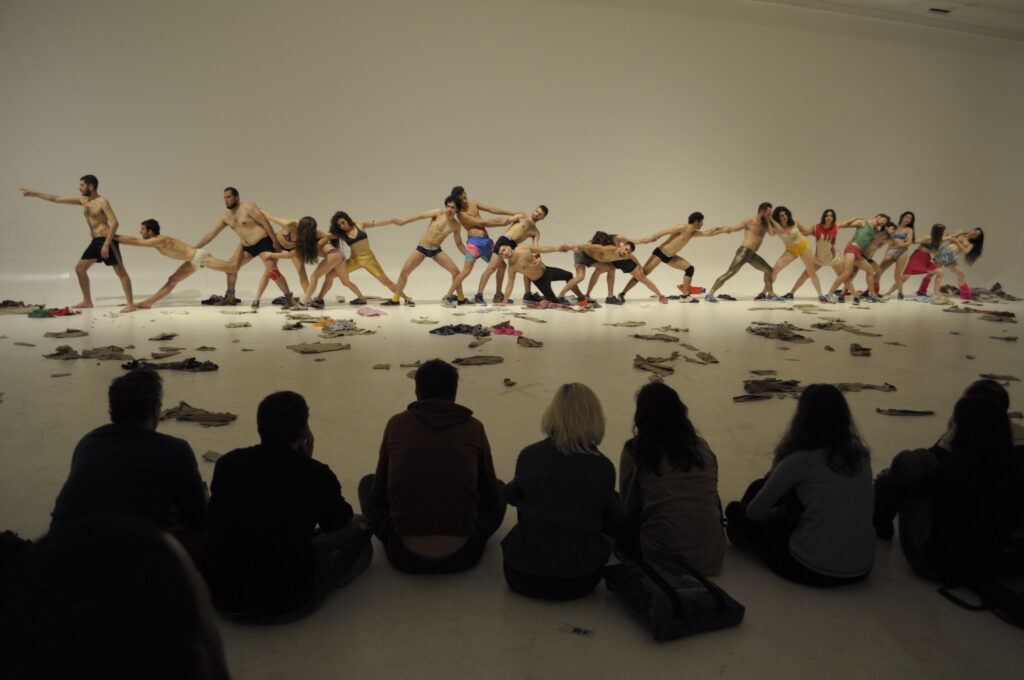
SLIt’s being in relation to global cultural production, with other artistic and non-artistic fields. I like to think of my work as a shamanic diplomacy: to place different worlds in relationship, from where situated practices and thought are produced. My worlds have been, and some continue to be: journalism, literary criticism, psychoanalysis, academic music and experimental sound art, the scientific arts, poetry, visual arts, disobedient sex activism, political theory, queer and trans feminist theories, the alternative culture of the night, public management and alternative DIY management. It is an arduous intellectual and affective work that involves being in relationship with a lot of information and many people at the same time.
And this work has given way to another compass phrase: “Where there is a deviation, we organize a support.” To deviate from the hegemony of the heterosexual way of life is to be at risk and vulnerable. So we need to create support networks for lives that are diverted so that they can continue to exist. There are bodies that are in greater existential danger than others, there are bodies that fall off the map more easily than others, that cannot sustain themselves in the demands of heterosexual culture. Becoming heterosexual is easy but not painless. Becoming lesbian or trans, in our culture, can be unlivable and deadly. So the point is how we create networks of affective, monetary, legal, pedagogical, subjective, artistic support. That is my activist work today: degenerate pedagogical practices as support networks.
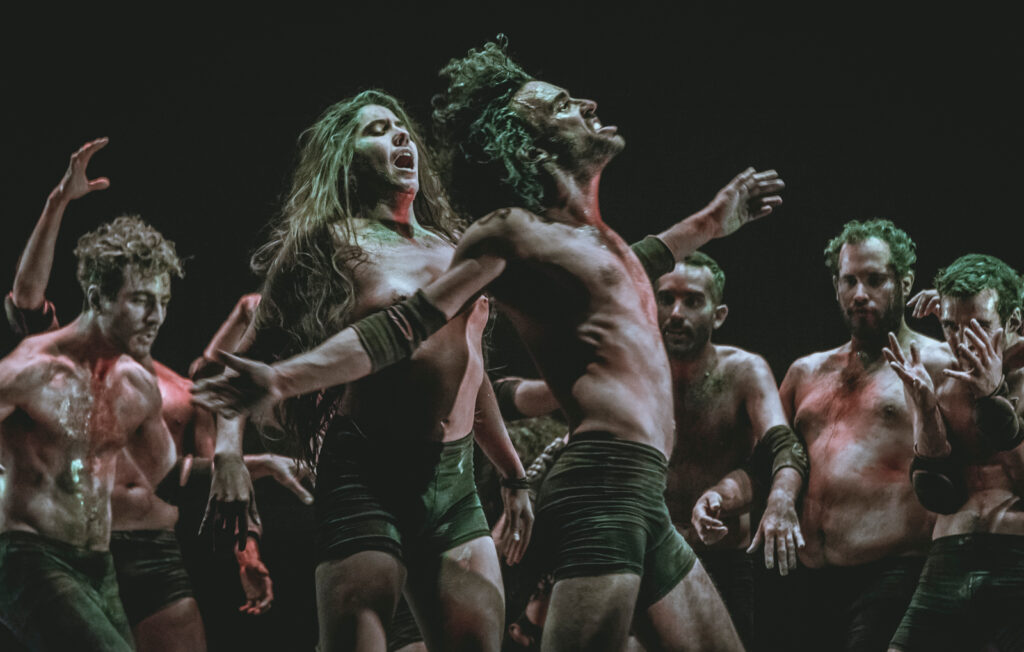
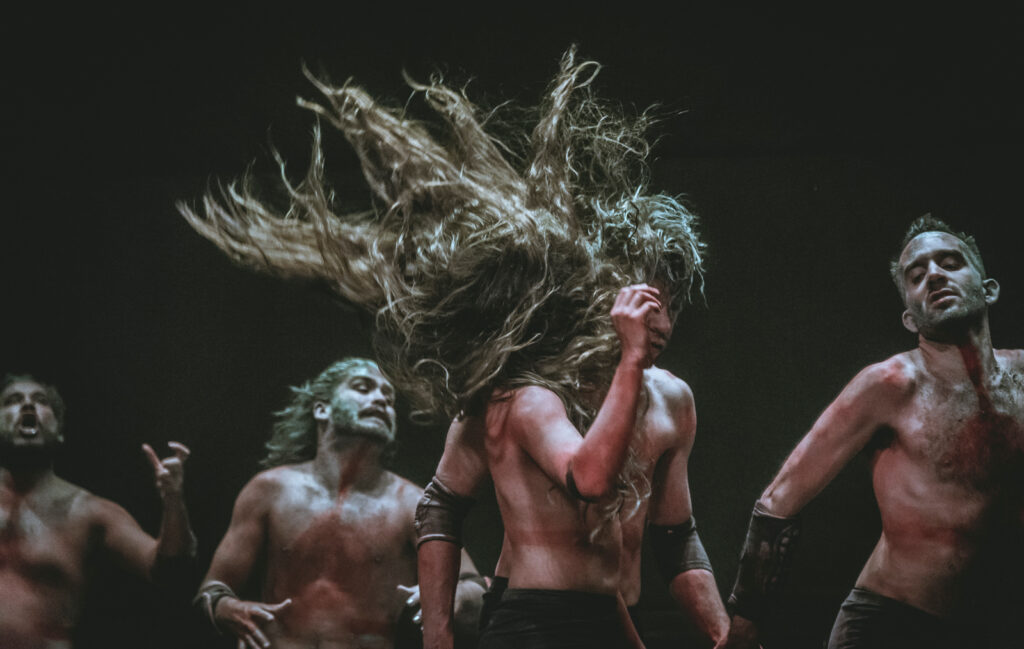
Poner el Culo & Destroy the Patriarchy
PPFor me today, homosexuality is part of the contract of heterosexuality as well, because they aspire to the family system, and continue to run from dissent and disobedience. For example, in the U.S. some people say, “Pride is not about sexuality, but about loving someone and having a family,” and there is a movement away from this counter-sexual idea, a desexualization and sanitization of queer bodies in order to continue belonging. In Minneapolis there’s a monthly event that recenters pleasure and sex by Queen Pea and Deeva Rose called Kinky Friday. It’s reminding society where they come from.
I also wish to bring attention of a line in your work with the ORGIE collective that says, “We kill the patriarchy with the tail” (referencing the butthole), and it reminds me of Paul Preciado’s concept of anal terror. If we say that as queer people, we rejoice in the anus in order to destroy the patriarchy; anal opening is essentially about philosophical openings to counter ignorance. And obviously it’s literally about opening the anus also (laughs)… What do you think about this as a way of imagining the world?

SLYes, that was a song we did for the show Pasadas de sexo y revolución (Excessed from sex and revolution), with the ORGIE collective. It comes from an activist anecdote that happened in Patagonia, in El Bolsón, in the summer of 2018, in the Festival for Diversity. The militants of the Mapuche cause, Santiago Maldonado and Rafael Nahuel, had recently been murdered there. The city was militarized. The municipality did not give us the authorization to do the festival’s act in the square. Until the last moment they did not authorize. Finally, they did it but with one condition: “You can’t march with torsos uncovered.” We decided then, in assembly, to go out to the street with our asses in the air, uncovered asses. And there came the protest song: “Que se corra la bola/que se corra la bola/al patriarcado lo matamos con la cola.” (“Let the ball run [let the information be disseminated quickly]/let the ball run/the patriarchy we kill it with the tail [butthole.]”)
And a few months later we sang that song in Buenos Aires in a theater. By de-hierarchizing genitality and putting the focus on the ass, not only is obscurantism and the frontality of the body eclipsed, but heterosexual identity and its power are eroded. Enabling the ass for other activities other than just defecation, we authorize ourselves for other organs to be sexualized and eroticized, too, and for other sexual and political identities to acquire the right to existence.
PPYou do it in a practice-based way and somatic way. You enter the body into your activism.
SLThank you. I’d say my artistic practice is my pedagogical practice as well. I do not dissociate the performance creations from my classes. In the training spaces an artistic thought is cooked. I do not teach knowledge, but I share procedures as a public survival kit. Teaching is an area for me of creating experimental and provisional communities. Within this framework, the research Intimacy of the Common emerged in relation to the book Simondon: A Philosophy of the Transindividual by Muriel Combes. Gilbert Simondon’s philosophy I’ve been working on for a while. Simondon’s philosophy works on how things and beings acquire existence, on the processes of individuation of matter and individuals.
PPTo generate an individuation, and at the same time generate a collective thought through the potential of individuation.
SLSimondon’s strong hypothesis is that there are no essences but relationships, relationship of relationships. In reality, there is no constituted element called an “individual,” but the individual is an illusion of unity or identity, because the individual is always in relation to relationships by identifying themself. The accent is on the “transindividual.” There is a split in what we have identified and know of ourselves, and what we do not yet identify and yet know we can be. In relation to each other, it is how a social novelty arises, a transformation.
Do you want to take all of this? Because I’m not going to eat it.
PPYes, yes…let’s finish. Well, Silvio, thank you. I hope it’s not the last time Minnesota hears your name (laughs.)

Translation note: Voice interview was conducted in Spanish, then transcribed and translated to English, edited in English, then retranslated to Spanish.
Para la versión en español ir a la página 2.